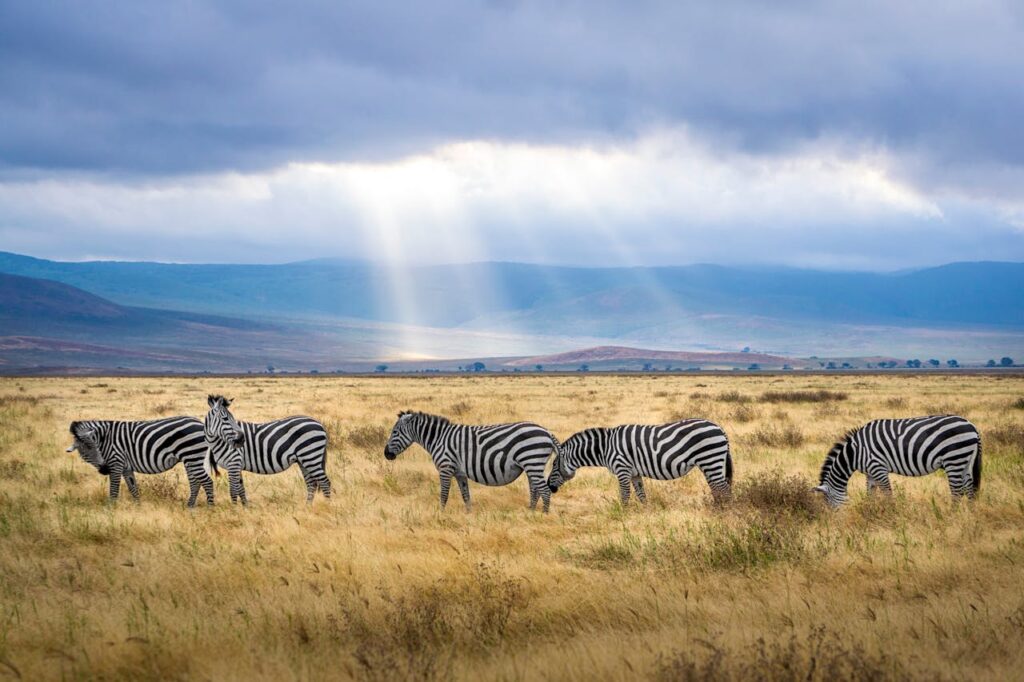Africa is undoubtedly one of the best places on earth for wildlife photography. The sheer variety of landscapes, from open savannahs to dense jungles to swampy landscapes, means that every shot tells a different story.
Some of the best shots I’ve seen include one with elephants marching in the Amboseli with Mt Kilimanjaro towering behind them and one of a massive male lion with a cab right underneath its mane. If you have seen these photos, we can agree that they are just spectacular!
Now, capturing these kinds of photos is not easy! For starters, you need to be in the right park and spot. Some destinations stand out more than others when it comes to getting that perfect shot.
Today, we will give you the top 8 African safari destinations that are well known for the most unreal shots.
8 African safari destinations for wildlife photography
1. Maasai Mara National Reserve, Kenya
Known for its vast golden plains, dramatic skies, and incredible density of wildlife, the Maasai Mara National Reserve offers some of the best photography opportunities, not just in Kenya, but Africa as a whole.
One of the biggest draws is the Great Migration, when over two million wildebeest, zebras, and gazelles cross the Mara River, often with crocodiles lurking beneath the surface. The action is raw, unpredictable, and visually intense – perfect for capturing powerful, once-in-a-lifetime images.
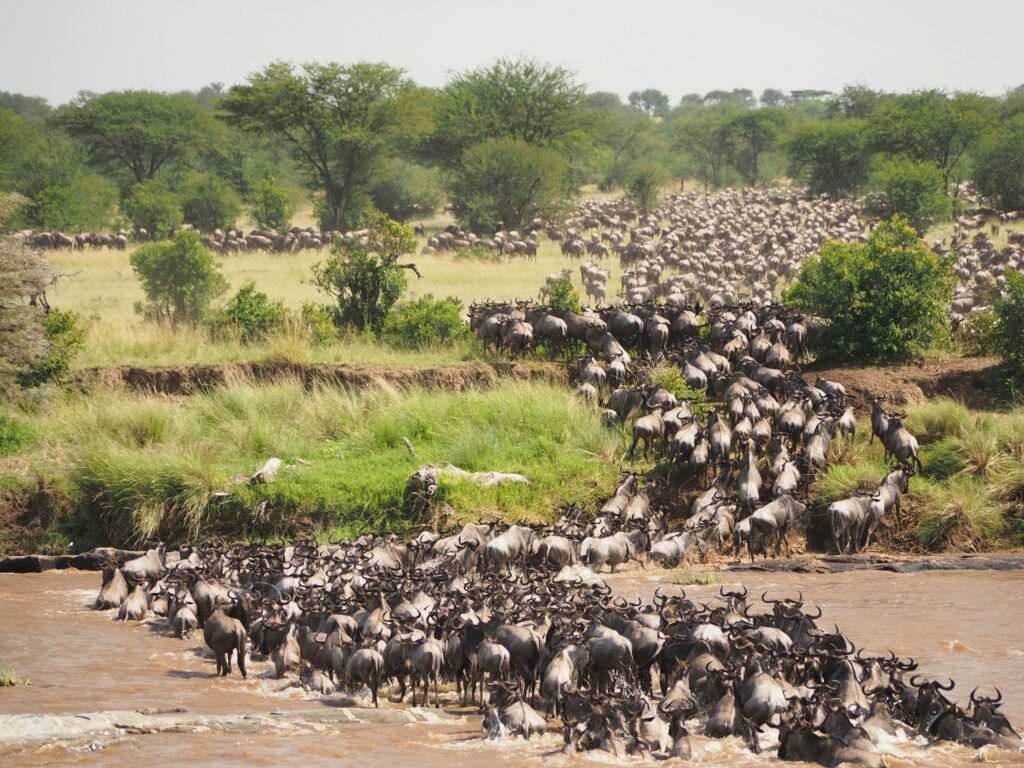
The other draw to the Mara is the concentration of the big cats and also the big five. When you add the endless rolling grasslands, scattered acacia trees, and the rich golden hues observed at sunrise and sunset, they form the perfect backdrop for any shot. It’s no wonder the Mara has been featured in a number of nature documentaries, including BBC’s Big Cat Diary.
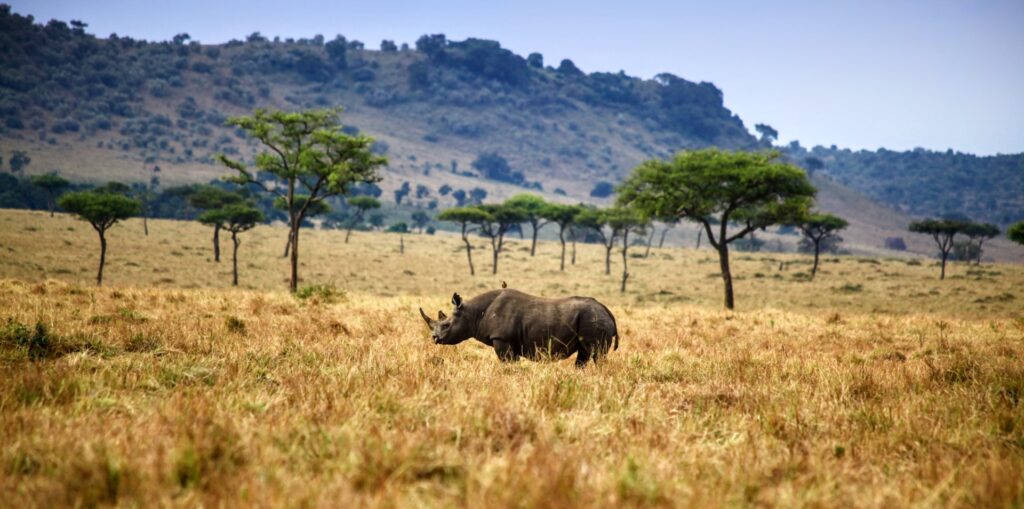
Photographers also love the Balanites trees (desert date trees) that dot the landscape. These distinct, umbrella-shaped trees add a classic African safari aesthetic to photos, often serving as perfect perches for leopards or creating stunning silhouettes during sunrise and sunset.
2. Serengeti National Park, Tanzania
The Serengeti is one of the most iconic wildlife photography destinations in the world. It features endless plains, teeming with animals, providing a perfect setting for capturing breathtaking shots.
Unlike the Maasai Mara, the Serengeti is quite expansive – spanning nearly 15,000 square kilometres. So, you can imagine your chances for the best nature shots ever! The great wildebeest migration is one of the biggest highlights! Also, millions of animals grazing in the vast Serengeti plains provide another breathtaking sight for photographers.
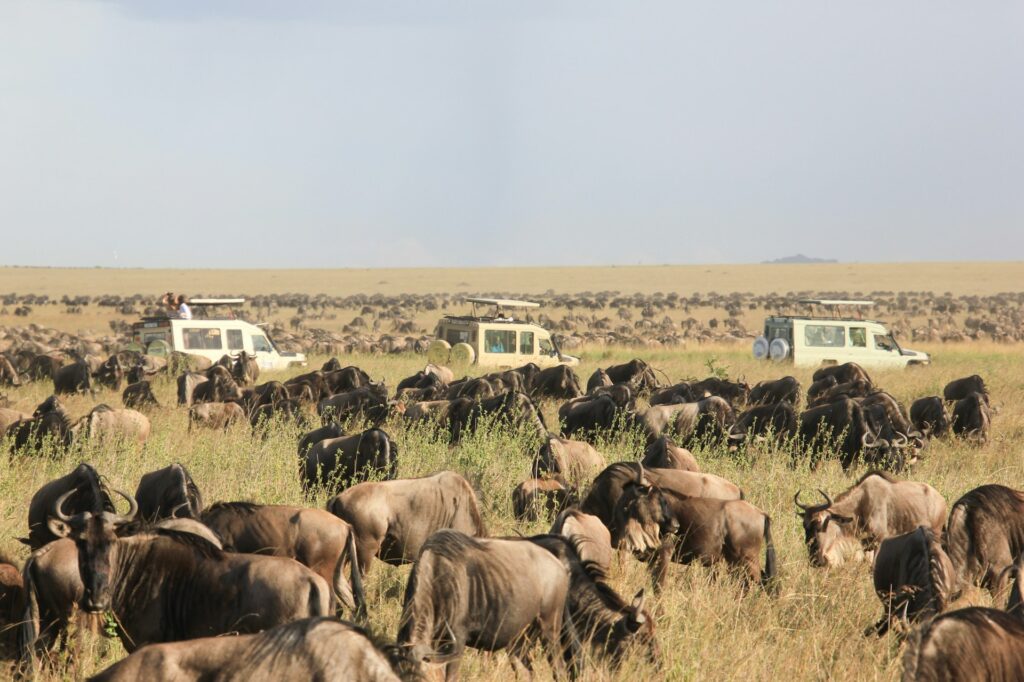
There is also the calving season in southern Serengeti between January and March. The plains literally transform into a nursery as hundreds of thousands of wildebeest give birth. Within minutes of being born, the calves take their first wobbly steps, and in just a few days, they’re running alongside the herd.
There is a lot of drama during this period, and when you add the fact that predators are always lurking around, you will get incredible photography opportunities.
Big cats are another major draw to the park. The open plains and scattered rock formations (kopjes) make it easier to spot and photograph these predators, often in action as they hunt or interact. Also, it is on these formations where these predators, especially lions, usually rest and survey the land. In fact, one of the most iconic sights in the Serengeti is a lion perched atop a kopje, surveying the land below like a true king.
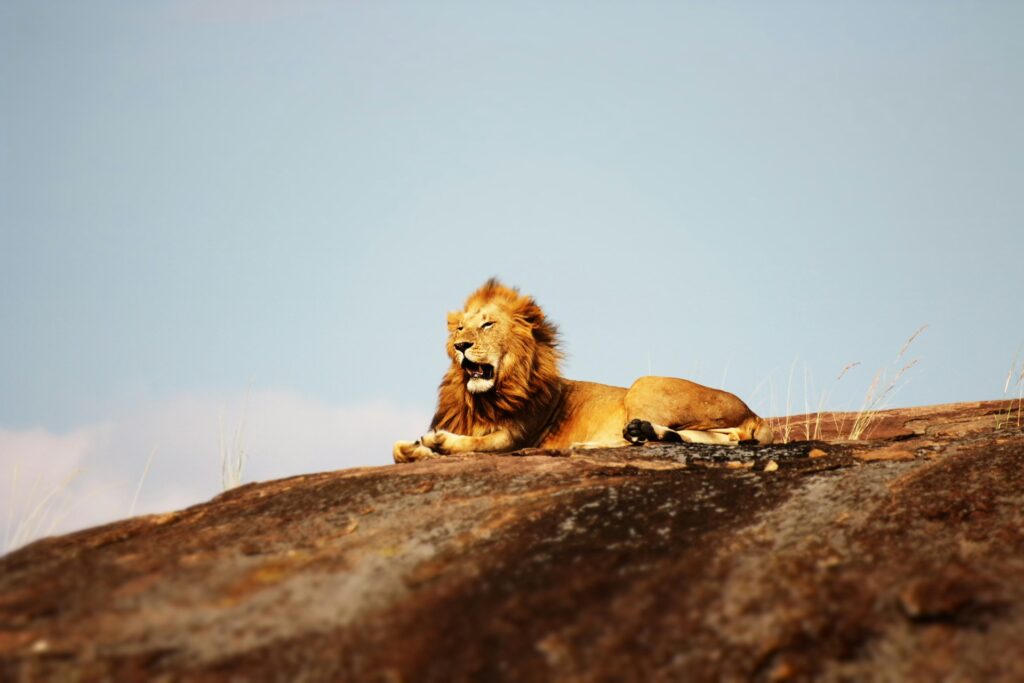
The way they sit there, gazing over their vast kingdom, makes for some of the most regal and commanding wildlife shots. It’s no wonder these scenes have been featured in countless documentaries—and even inspired the famous imagery of The Lion King.
3. Amboseli National Park, Kenya
Amboseli National Park is a dream location for wildlife photographers worldwide, as it offers some of the most iconic and instantly recognizable safari scenes of any African Safari destination. One of the biggest attractions to this park is the breathtaking backdrop of Mount Kilimanjaro, Africa’s highest peak.
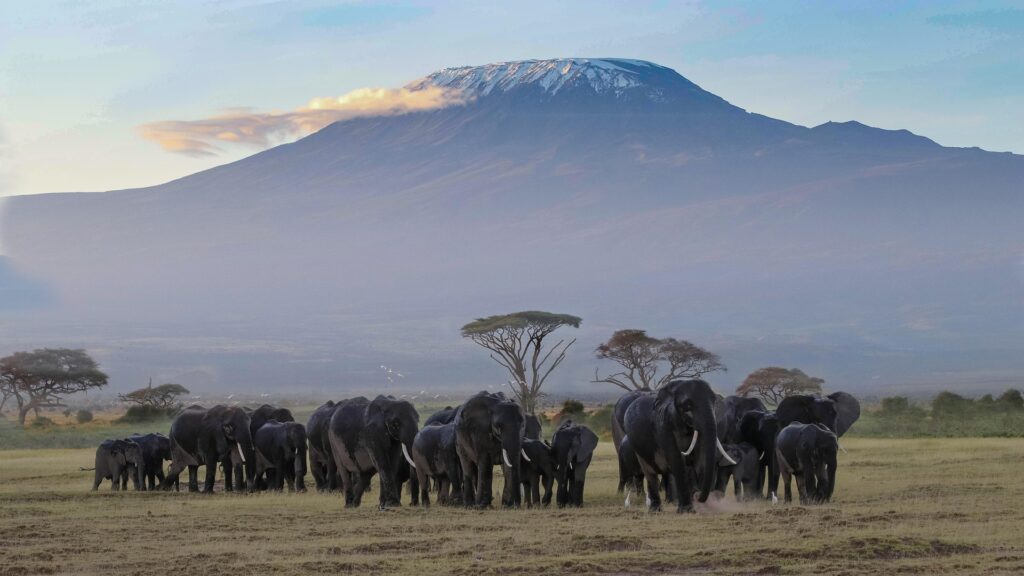
Seeing a herd of elephants gracefully moving across the dusty plains with the snow-capped mountain towering behind them is the kind of shot that belongs on magazine covers. And so many photographers seem to agree, as many flock to the Amboseli, to get this photo.
Secondly, Amboseli National Park is well-known for its concentration of elephants, including some of Africa’s last remaining “big tuskers.” These majestic giants, with their enormous ivory tusks, make for striking subjects, especially in the golden morning and evening light.
The park’s open terrain makes it easy to capture these elephants in all their glory, whether in silhouette against the setting sun or up close as they kick up dust while walking. Probably you’ve come across those images or videos of these animals in massive groups led by a matriarch just walking in search of water.
Another attractive feature of Amboseli is its vast seasonal swamps and lake, which attract an incredible variety of wildlife. These lush, green patches contrast beautifully with the otherwise dry, dusty landscape, allowing photographers to capture animals in dramatically different settings within the same park.

Hippos, wildebeests, buffalos, flamingos, and even predators like lions are often seen near these water sources, providing diverse photography opportunities.
4. Kruger National Park, South Africa
This is the other African safari destination we would highly recommend for wildlife photographers. This park is in South Africa and is one of Africa’s largest and most diverse reserves. Here, you are guaranteed to get amazing nature shots!
Now, unlike many African safari destinations where you need tour guides and a 4×4, Kruger has a well-maintained road network, which means that visitors can do self-drive safaris. So, as a photographer, you can take all the time you want for that perfect shot.
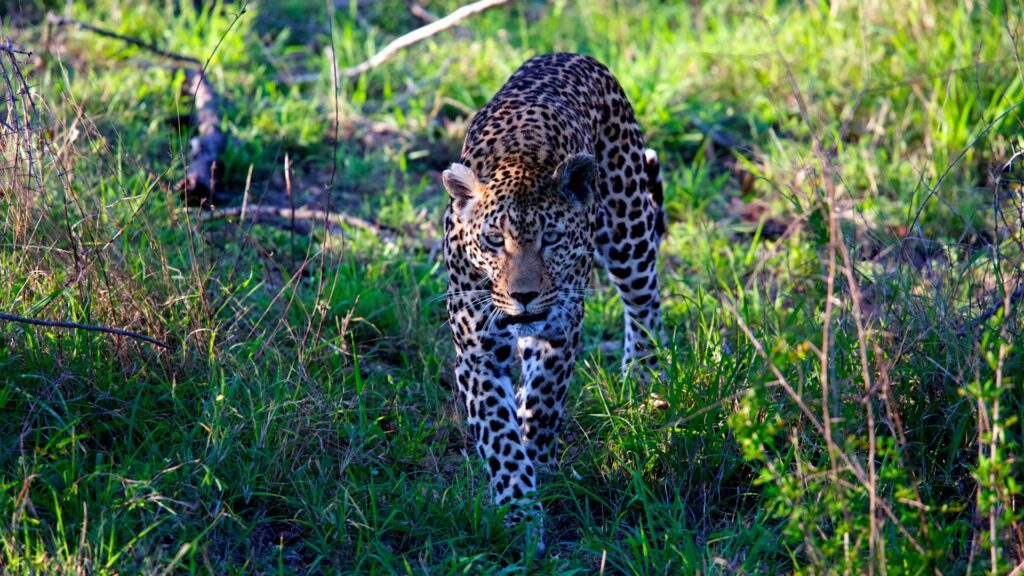
Kruger is also one of the best places in Africa to photograph the Big Five, especially leopards. The park has one of the highest densities of leopards in the world, making it a prime spot to snap these elusive cats. And if you’re after action shots, Kruger’s mix of open plains, dense bush, and waterholes means predator-prey interactions are a common sight. Essentially, when it comes to wildlife encounters and photographic opportunities, this park is hard to beat.
5. Okavango Delta, Botswana
The Okavango Delta in Botswana is one of the most unique African safari destinations, and when it comes to wildlife photography, it offers something different from the usual savannah landscapes. The vast, seasonal floodplain transforms into a lush oasis, creating stunning contrasts between land and water, with animals adapting to this ever-changing environment.
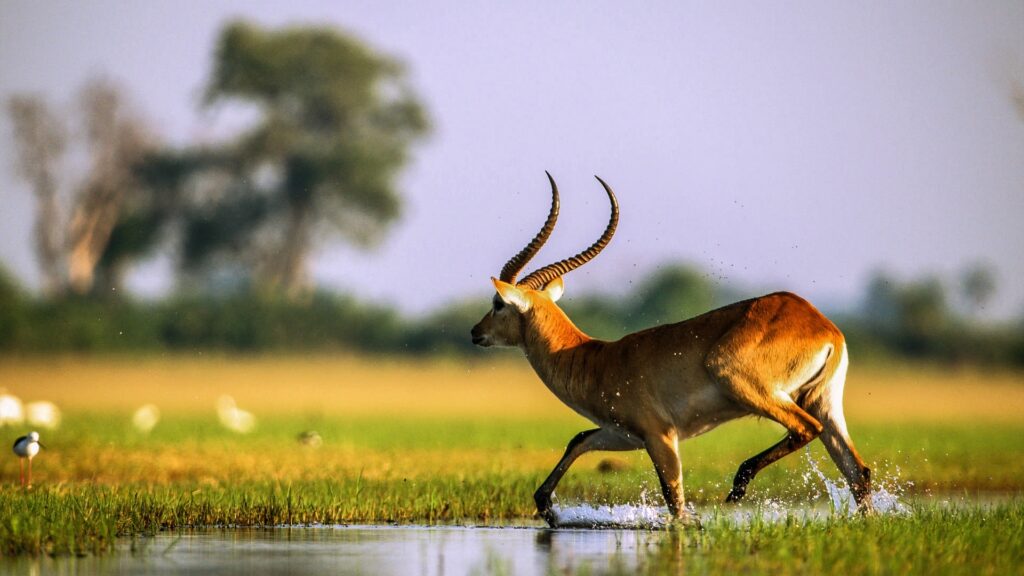
The delta is home to large populations of elephants, hippos, crocodiles, and the elusive sitatunga and red lechwe – antelope species that are rarely seen elsewhere. It’s also a paradise for bird photographers, with over 400 bird species, including African fish eagles, kingfishers, and Pel’s fishing owls.
What really sets the Okavango Delta apart is the unique way you experience it – by mokoro (traditional dugout canoe) or speed boats. Gliding silently through the water, with papyrus reeds towering around you, provides a rare eye-level perspective of wildlife. Photographing elephants as they wade through the channels or hippos peeking just above the surface adds a dynamic and immersive feel to your shots.
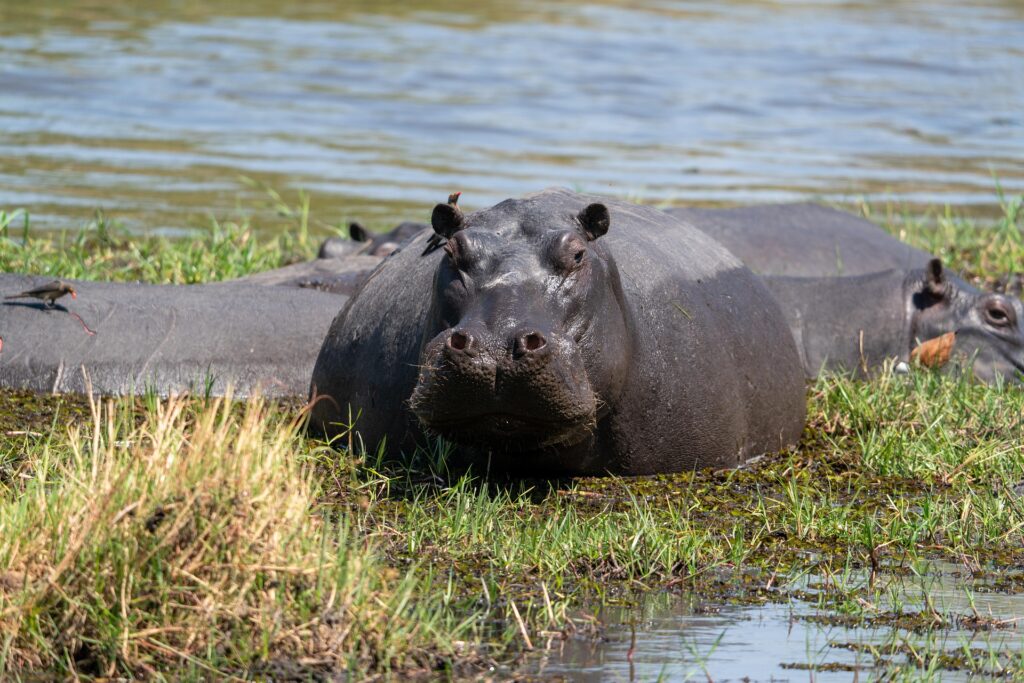
There are also incredible predator sightings here. You’ve probably come across documentaries of predators chasing antelopes across the floodplains, many times unsuccessfully! Those opportunities are in abundance here, especially in areas like Moremi Game Reserve.
The shifting seasons bring even more variety. During the dry months, animals gather around the remaining water sources, making them easier to find and photograph. In the wet season, the lush greenery and blue waterways create stunning aerial photography opportunities, especially for those using drones.
6. Chobe National Park, Botswana
This park is home to the largest elephant populations in Africa, with herds sometimes numbering in the hundreds – an incredible sight that guarantees great shots. The Chobe River that cuts across the park also gives you a chance to photograph the animals from a low, water-level angle, which can be quite incredible.
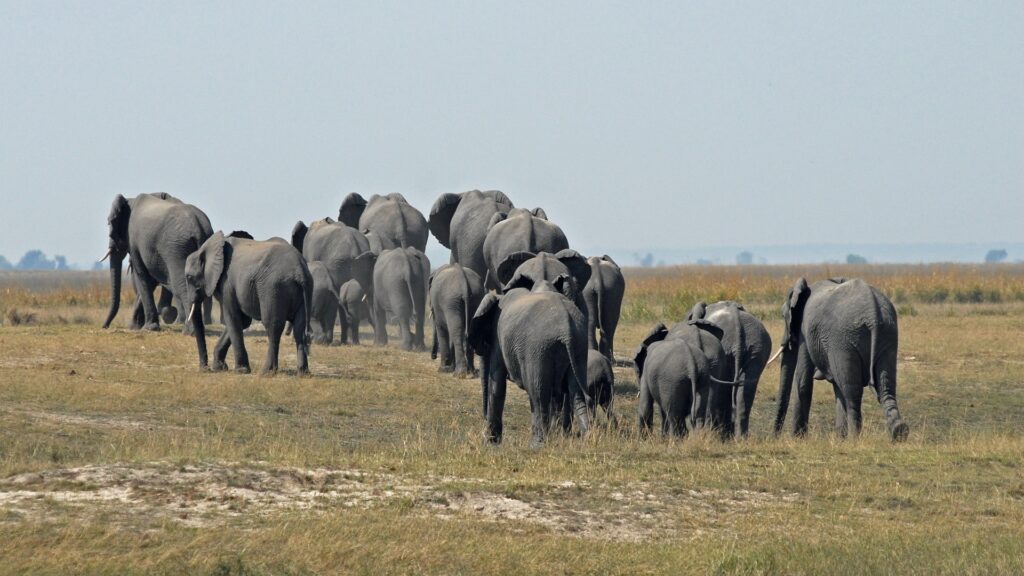
In this park, there is a region known as Savuti, and it’s very famous for its lion and hyena interactions. It’s also here where large pride of lions are known to hunt elephants, which is a unique nature event that has been documented in multiple nature films.
For bird photographers, Chobe has over 450 recorded species. Kingfishers, African fish eagles, and colourful bee-eaters are common along the river, making it an excellent place for both action shots and detailed close-ups.
Many lodges and tour operators in this park specialize in photographic safaris, offering customized boat safari trips and game drives designed for photographers, often with stabilized platforms for capturing clear, sharp images.
7. Ngorongoro crater, Tanzania
This massive, natural volcanic caldera is known for its incredible concentration of wildlife, making it the other African safari destination that’s perfect for wildlife photography. Ngorongoro Crater is one of those places that just feels unreal. Inside the crater, it’s like nature pressed pause thousands of years ago – the landscapes are dramaticwildlife is everywhere, and the whole place has this untouched, almost prehistoric feel to it.

Formed by a collapsed volcano millions of years ago, it’s now a vast, self-contained ecosystem teeming with wildlife. The crater’s steep walls rise over 600 meters, enclosing a landscape of open grasslands, acacia woodlands, and shimmering lakes. This natural barrier keeps many animals inside, making it one of the best places in Africa to see a high concentration of wildlife in a relatively small area. The habitat does support a wide range of animals, including the black rhinos that are frequently spotted.

One of the coolest things about Ngorongoro is how photogenic it is from literally every angle. The high crater walls create an epic backdrop for wildlife shots, making everything feel even more dramatic. If you’re here early in the morning, the mist rolling over the plains gives the whole place a dreamy, almost otherworldly atmosphere.
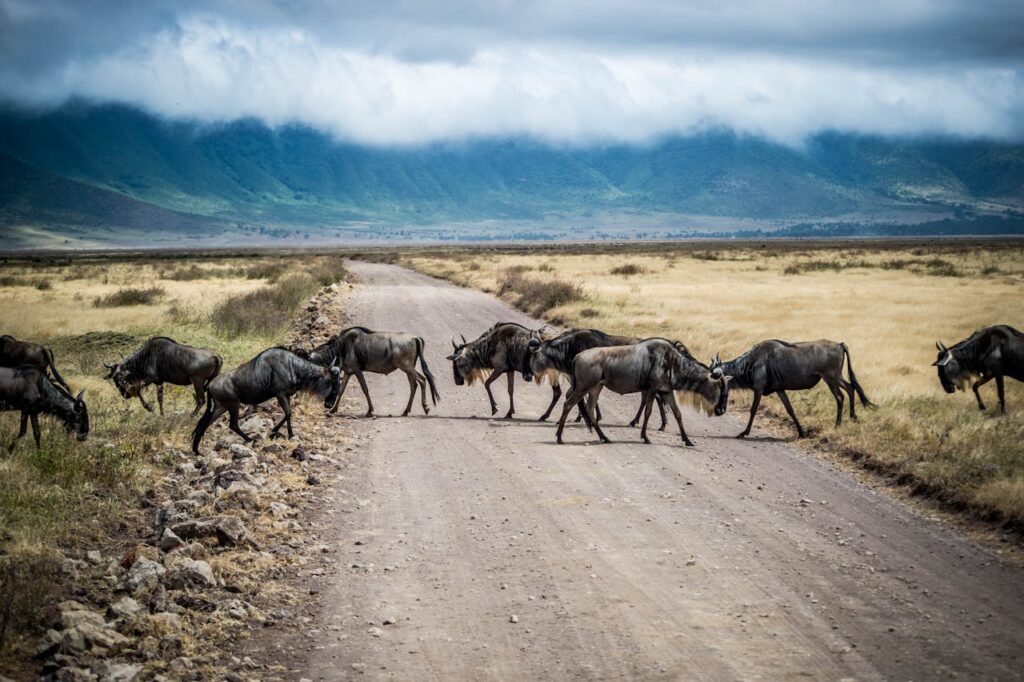
And because the crater floor is relatively open, you don’t have to deal with thick bushes getting in the way—just wide, clear shots of animals in their element. There’s a reason so many legendary wildlife photos have come from this place!
8. Namibia
Yes, here we are recommending the country! You see, you can’t limit yourself to animals when it comes to Namibia. For instance, this country has massive red sand dunes, endless desert landscapes, and some of the most dramatic scenery in Africa. So, if you’re looking for something different from the usual wildlife-packed savannahs, this is it.
One of the biggest attractions in this South African country is Sossusvlei in the Namib Desert. The dunes here are some of the tallest in the world, rising over 300 meters, and the light at sunrise and sunset turns them into glowing shades of deep orange and red.
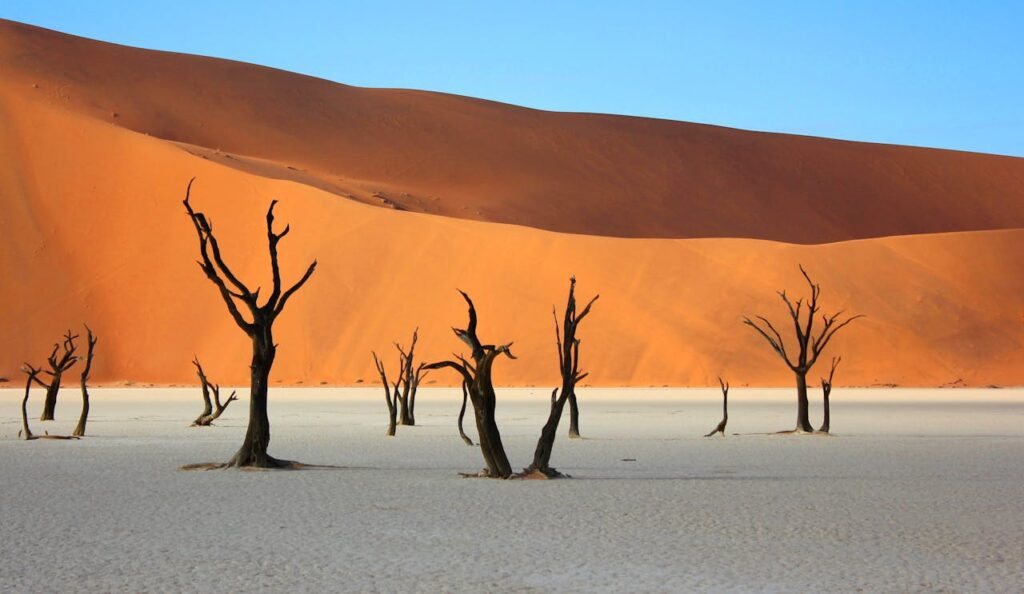
Then there’s Deadvlei, a white clay pan with centuries-old dead camel thorn trees standing stark against the desert. It’s one of the most surreal and photographed places in Namibia – if you’ve ever seen eerie, skeleton-like trees in front of glowing sand dunes, that’s Deadvlei.
And if you want to see wildlife, then we will recommend Etosha National Park. It is one of the best places to see wildlife in Namibia, and because much of it is dry and open, it makes for incredibly clean, crisp wildlife photography.
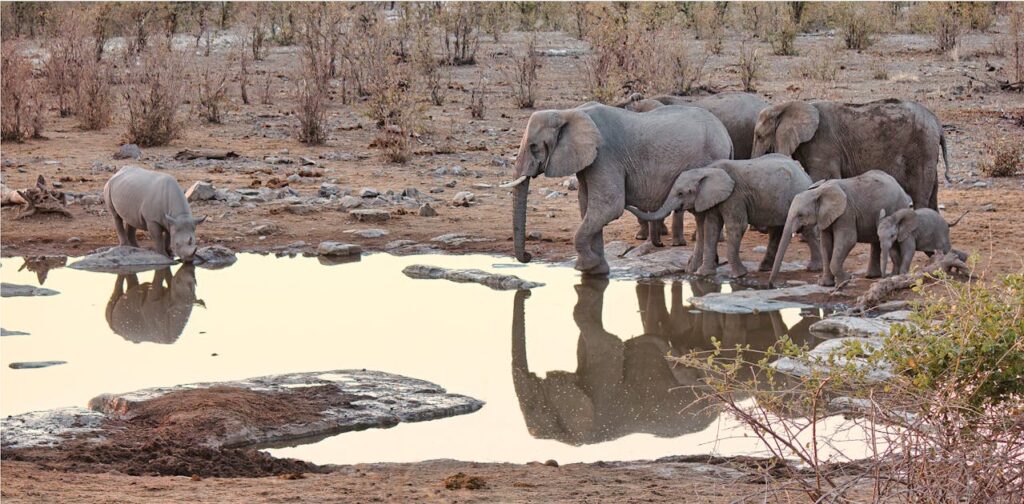
During the dry season, animals gather around the park’s huge salt pan and waterholes, making it easy to spot elephants, lions, and rhinos in a single frame. The lack of thick vegetation means you get clear, unobstructed shots.
There’s also the infamous Skeleton Coast, a remote and rugged stretch of coastline dotted with shipwrecks, fog-covered beaches, and colonies of Cape fur seals. It’s wild and unlike anything else, you’ll see in Africa.
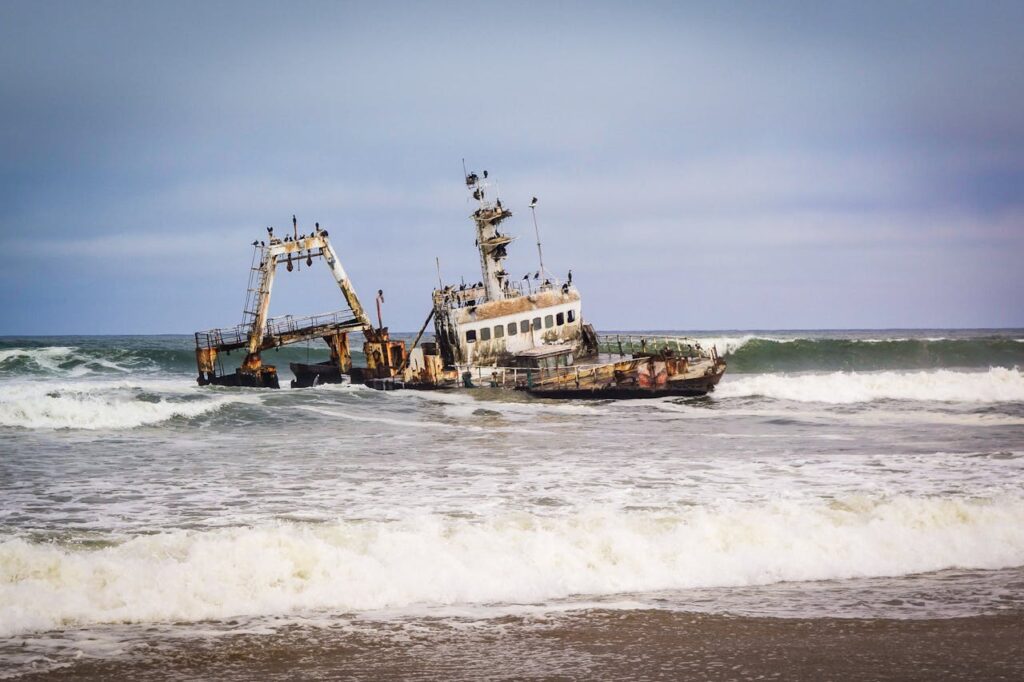
Namibia is also one of the best places for astrophotography. With almost no light pollution, the night skies are unreal. Places like NamibRand Nature Reserve offer some of the clearest Milky Way views on the planet, making it perfect for long-exposure night shots.
When it comes to nature, Namibia is one of the most unique destinations, in the world!
Conclusion
Let’s be honest. Africa is hands down one of the best places on Earth for wildlife photography, and these destinations prove it. I mean, whether it’s the great migrations of the Serengeti and Maasai Mara, the raw wilderness of Botswana’s Okavango Delta and Chobe, or the surreal landscapes of Namibia, every single of these locations offers something unique. The sheer diversity in these places means no two shots are ever the same. So, if you’re serious about capturing breathtaking, once-in-a-lifetime images, then there’s no better place to bring your camera.

